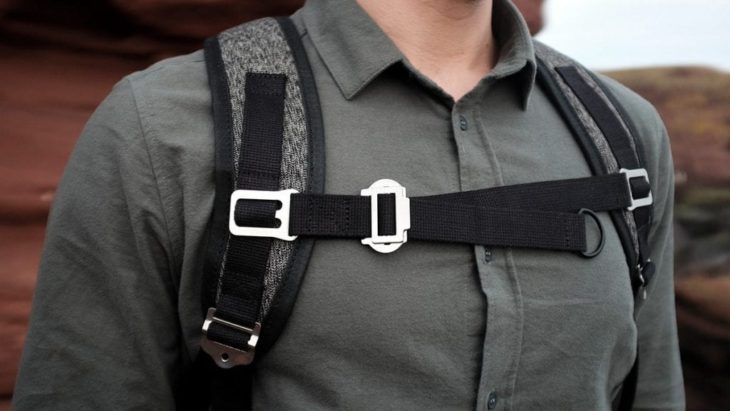Are you planning a refuge hike? Great idea, but to ensure you have a beautiful day of walking, be careful about the choice and content of your hiking backpack, and before you venture into the great outdoors, good preparation of your hiking backpack is necessary to fully enjoy your day. Follow our advice to plan the necessary and not miss anything on your tour.
The right hiking backpack requires taking into account three elements: the weight, the volume, and the wearing comfort.
Empty, it must not exceed two kilos. For a hike of two or three days, choose a bag with a volume between 40 and 50 liters, and that will accommodate your sleeping bag, your spare clothes, some essential accessories and your food and water for the day. If your itinerary requires you to board a tent and extra food, the required volume will vary between 50 and 70 liters. It is not useful to have a lot of side pockets and accessories; favor simplicity and solidity.
The weight of your hiking backpack must be borne especially by the pelvis and straps must fit the shoulders without exerting pressure. Adjusted, the hip belt can move the load and make it support the leg muscles. The shoulder straps solicit other muscles.

Img source: theadventurejunkies.com
Contents
Adjustment manual:
– Loosen all straps and belts.
– Put the loaded bag on your back.
– Adjust the hip belt around the pelvis (this part of the body supports most of the load).
– Adjust the length of the straps and the distance between the straps and the hip belt so that the bag is placed at the right level, without the pressure being too strong on the shoulder straps.
– Adjust the load reminders located at the top of the shoulder straps, or at the bottom, to flatten the bag on the back. The closer the space between the bag and the shoulders, the more the shoulders are stressed.
Adjust the chest strap for optimal stability.

Img source: shopify.com
The right loading
The filling distributes weight and avoids lateral imbalances and leverage, placing the heavier items near the back.
At the bottom of the bag, place light things (sleeping bag). On the models of bags of rando allowing direct access to the bottom, one also has clothes useful during the day (jacket of protection or fleece).
Along the back and above the bag bottom: arrange the heaviest items (stove, evening food, water).
In the upper part and the side pockets: divide your belongings for the day, taking care to balance the pockets. In the upper pocket, put the most used or fragile items. Under the upper pocket: keys and papers. When the bag has a belt pocket, you can slip some cereal bars or a small camera. Remember to place your most fragile things (papers or phone) in a waterproof zip freezer bag. Finally, adjust the compression straps to prevent movement inside the bag.
Advice
Even if your hiking backpack is weatherproof, an on-bag is very useful for keeping your things safe on rainy days.
Compare your business with trash bags or dedicated bags. This makes finding them easy and makes it easy to store, but most importantly it isolates them from each other in case of leakage.
Limit the weight of your backpack by tracking the superfluous.
You will rarely hike alone. Remember to allocate “common” expenses (food, water supply, first aid kit, stove).
Choice of the hiking backpack
The choice of the hiking backpack is not to be neglected. Take a hiking backpack with a ventral attachment that promotes good weight distribution. It is better to put heavy objects on the bottom of the bag and to put on top a rain suit. To spend a day of hiking without embarrassment, take care to distribute the load for the health of your back. If you go for a day, a capacity of 30 to 40 liters will be enough to bring the necessary.
Img source: choosebackpacks.comFood
The recommendation is always the same: drink! Plan in your hiking backpack energy bars to stall small appetites during your hike in addition to bottled water. Multifunction knife and the plastic bag will also be useful during your picnic.
Clothing
Another tip for hiking: the polar is often trend in hiking even in the summer because the weather is often misleading. To avoid sunstroke, do not forget the summer visor cap. In winter the hat and the gloves will be a must.
Important accessories
The last tip for hiking: in a day that everything can happen, a little hassle can take larger sizes in the wild. That’s why, do not hesitate and act like true hiker by bringing health products, knives, bandages, bandages, cotton, a headlamp, spare linen, anti-inflammatory gel, and a satellite phone.
Finally, for fun, nothing prevents you from taking with you a camera (remember the battery!) And a pair of binoculars to memorize landscapes that will continue to scroll along your walk.
Now you are ready to deal with all situations during your day hiking. And do not forget, the hiker’s first enemy is the weight so do not hesitate on the quality of the material.
